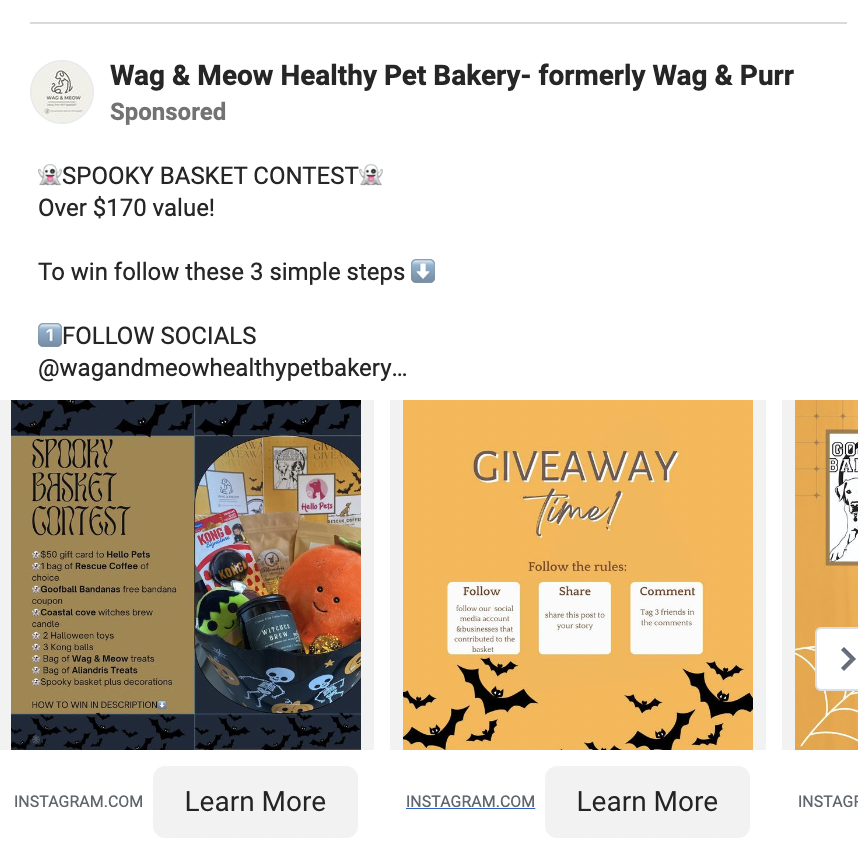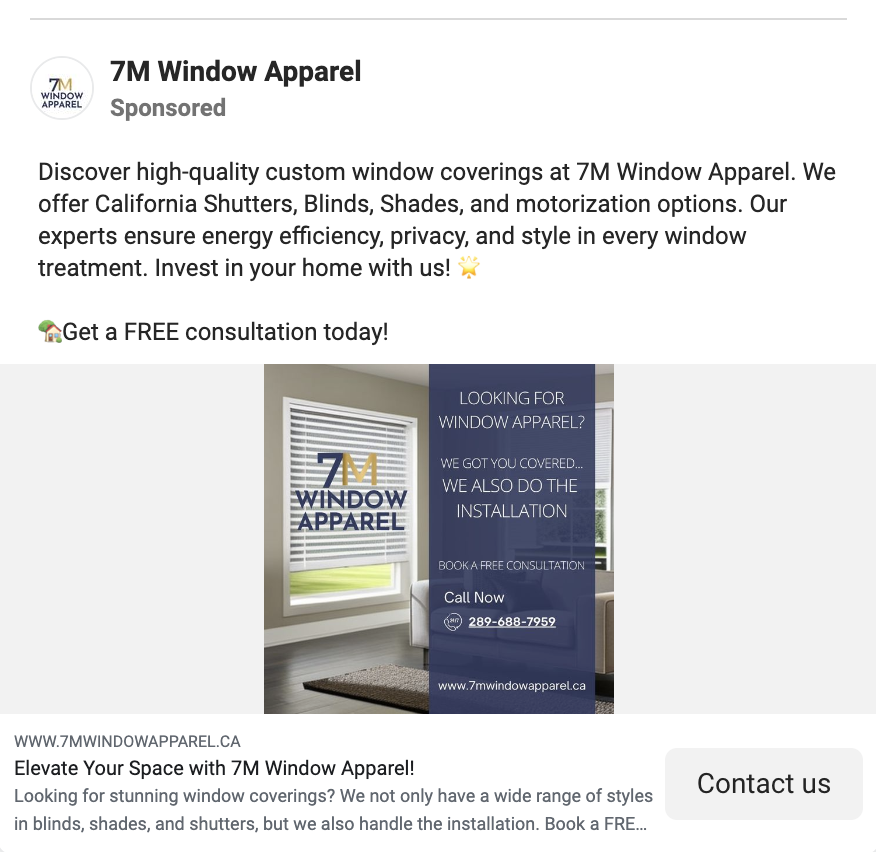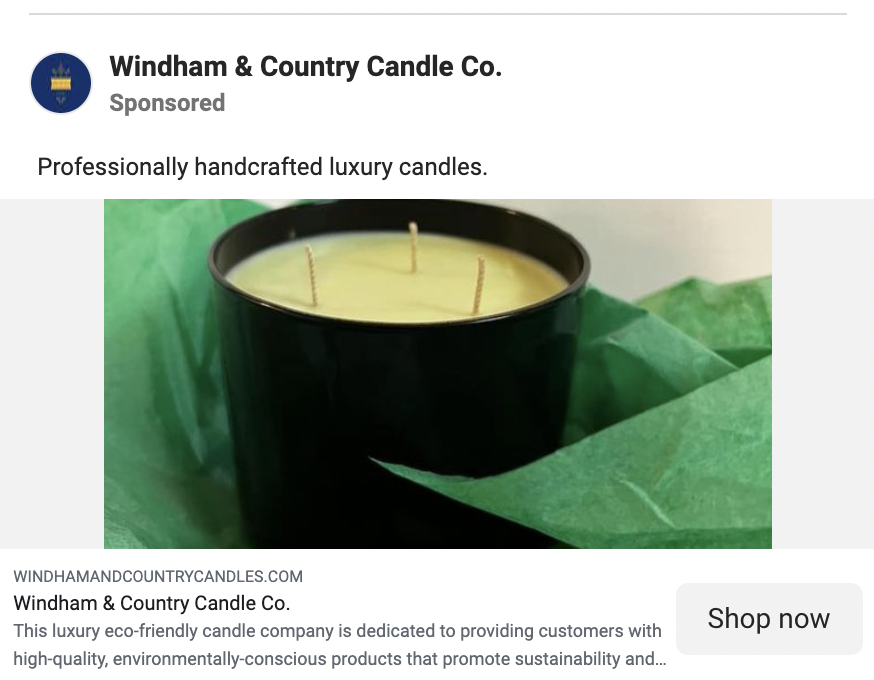Effective use of social media not only improves your brand identity, but it also expands your reach and leads to more customer engagement.
If you own a small business and you are not sure how to use social media as a marketing strategy, this article is for you. The 7 tips outlined in this article will enhance your marketing strategy by providing you with specific actionable ideas, benefits, and coordination tips.
Click on each corresponding link to jump ahead:
If you require assistance with incorporating social media as a marketing strategy, contact us.
Social Media as a Marketing Strategy
Social media as a marketing strategy refers to the use of various social media platforms to connect with your target audience to effectively:
Build your brand
Increase sales
Drive website traffic
It involves creating and sharing content on various social media networks such as:
Sharing content on multiple social media platforms allows you to achieve your marketing and branding goals.
For small business owners, like yourself, social media marketing can serve as a cost-effective and powerful tool to:
Increase Brand Awareness: By regularly sharing engaging content and interacting with your audience, you can increase visibility and brand recognition for your small business.
Engage with Customers: Social media provides a platform for direct interaction with customers. Businesses owners, like yourself, can respond to queries, complaints, and feedback in real-time, fostering a positive relationship with your customer base.
Drive Website Traffic: Sharing content and updates about products and services on social media platforms can drive traffic to your business website, potentially leading to increased sales and conversions.
Generate Leads and Sales: Through targeted advertising and strategic content, your small businesses can generate leads and convert them into paying customers.
Build a Community: Social media enables businesses to build a community around their brand by fostering a sense of loyalty and advocacy among their followers and customers.
Monitor Competitors: Small businesses can keep an eye on their competitors' social media activities and marketing strategies to identify potential opportunities and stay ahead in the market.
Collect Customer Insights: Social media platforms offer various analytics tools that can provide valuable insights into your customer’s behaviour, preferences, and trends, which can be used to refine your marketing strategies.
Overall, social media marketing allows small business owners to level the playing field with larger competitors. In return. It enables business owners like yourself to reach a global audience, build brand credibility, and establish long-term relationships with customers. It is an essential component of any modern marketing strategy, providing numerous opportunities for growth and success.
7 Simple Ways To Use Social Media As a Marketing Strategy
1. Content Creation and Sharing
Using content creation and sharing as a social media marketing strategy can be highly effective for small businesses.
A) Content Creation Ideas
For example, let’s say you own a small coffee shop. You can create various types of social media content to improve your brand awareness and customer engagement. Below are some content ideas you can use.
Behind-the-Scenes Videos: Share short videos showcasing the coffee-making process, introducing the baristas, and giving a glimpse of the cozy ambiance in the shop to provide customers with an inside look at the daily operations and the atmosphere of the coffee shop. YouTube shorts, Instagram Reels, and TikTok’s are all extremely popular. These videos are short in duration but extremely attention grabbing.
Interactive Polls and Questions: Engage customers by posting polls or questions related to coffee preferences, such as favourite coffee flavours or preferred brewing methods. This can encourage customers to actively participate and share their opinions.
User-Generated Content: Encourage customers to share pictures of their favourite coffee drinks from the shop on Instagram, Facebook, or Twitter/X using a specific hashtag. Repost some of these images on the coffee shop's social media accounts, showcasing the customer experience and building a sense of community among coffee enthusiasts.
By implementing these content ideas, the small coffee shop can effectively leverage social media to strengthen its brand awareness, engage with customers, and create a loyal customer base within the local community. When it comes to content creation, allow your innovative mind to take control! Be creative in your approach.
B) Benefits of Content Creation and Sharing
Below are some of the main benefits that content creation and sharing have on small businesses.
Increased Brand Awareness: Regularly creating and sharing valuable content related to your industry can help increase your brand's visibility and establish your business as a thought leader.
Enhanced Customer Trust: Providing valuable and relevant content can help build trust and credibility with your audience, which is crucial for converting potential customers into loyal ones.
Improved Customer Engagement: Engaging content such as blog posts, videos, and infographics can encourage your audience to interact with your brand, leading to increased likes, shares, and comments.
Better Search Engine Rankings: Quality content can improve your search engine optimization (SEO) efforts, making it easier for potential customers to find your business online.
Cost-Effectiveness: Creating content is a relatively low-cost marketing strategy, making it accessible for small businesses with limited budgets.
Now, let’s take a look at how to actually coordinate something like this.
C) How to Coordinate Content Creation
Chances are, you agree that the benefits of content creation and sharing sound great! However, you may be asking yourself “how do I actually begin this project?”.
Identify Your Target Audience: Understand your target audience's preferences and interests to create content that resonates with them.
Diversify Content Formats: Experiment with various content formats, including videos, blog posts, infographics, and podcasts, to cater to different audience preferences.
Create a Content Calendar: Plan a content calendar outlining the types of content to be created and shared. Include topics, publishing dates, and the platforms on which the content will be shared. This will ensure you have a consistent posting schedule.
Utilize Social Media Engagement Tools: Use social media management tools like Hootsuite, Buffer, or Sprout Social to schedule posts, monitor engagement, and analyze performance. Or, hire a professional marketing agency.
By consistently creating and sharing valuable content and effectively coordinating this strategy, you can significantly enhance your social media presence, better engage with their audience, and ultimately drive overall business growth and success.
2. Community Engagement
Community engagement is everything for a small business! Let’s learn how you can use community engagement to benefit your business.
A) Ideas for Community Engagement
Let’s say you own a small bookstore. Here are some effective ways that you can engage with your community on social media to improve your overall brand awareness and customer engagement.
Author Meet-and-Greets: Host events where local or renowned authors can interact with the community. Use social media to create buzz around these events by sharing author profiles, interview snippets, and event teasers. Live stream segments of the meet-and-greets to engage a wider virtual audience, including book enthusiasts who may not be able to attend in person.
Book Clubs and Reading Events: Organize regular book club meetings or reading events where community members can come together to discuss a chosen book. Encourage participants to share their thoughts on social media using a specific hashtag, fostering a sense of community and encouraging others to join in.
Community Spotlight Posts: Use social media to showcase local community members, such as teachers, students, or notable figures, and highlight their favourite books or literary interests. Encourage them to share their stories and recommendations, creating a dynamic online dialogue that fosters a sense of belonging and encourages further community participation.
By implementing these community engagement strategies and others alike, your small bookstore can create a strong sense of community, strengthen its brand presence, and build lasting relationships with customers, ultimately contributing to your growth and success within the local area.
B) Benefits of Community Engagement
Community engagement can offer numerous benefits for your small businesses. Some of these advantages include:
Brand Loyalty: Engaging with the local community fosters a sense of loyalty among customers, leading to repeat business and increased customer retention.
Word-of-Mouth Marketing: Positive interactions with the community can lead to increased word-of-mouth referrals, as satisfied customers are more likely to recommend your business to friends and family.
Customer Insight and Feedback: Engaging with the community allows the opportunity for your businesses to receive direct feedback from customers, enabling them to understand their needs and preferences better, thus guiding product and service improvements.
Positive Public Relations: Community engagement activities can enhance your business's public image, positioning it as a socially responsible and community-focused entity, which can lead to positive media coverage and public relations opportunities.
Overall, community engagement is a valuable strategy for small businesses to establish a strong presence within their local area, build meaningful relationships with customers, and create a positive impact, leading to long-term business success and growth.
C) How to Coordinate Community Engagement
Coordinating community engagement for a small business involves several key steps to ensure effective participation and interaction within the local community. Here are some guidelines on how to coordinate community engagement.
Create an Engagement Plan: Develop a comprehensive engagement plan outlining the activities, events, and initiatives that align with the identified community needs and business objectives. Ensure that the plan is feasible and fits within the business's resources and capabilities.
Attend Local Events: Actively participate in local events, fairs, and community gatherings to demonstrate your business's commitment to the community. Use these opportunities to network, build relationships, and gather feedback from community members.
Utilize Social Media and Online Platforms: Leverage social media platforms and online communities to communicate and engage with the local community. Share updates, event information, and relevant content to encourage participation and foster a sense of belonging.
Sponsor or Host Community Events: Sponsor or host events that align with your business values and resonate with the local community. This could include sponsoring local sports teams, hosting charity drives, or organizing educational workshops that benefit the community.
By following these steps, small businesses can effectively coordinate community engagement efforts, strengthen their relationships within the local area, and contribute positively to the communities they serve.
3. Contests and Giveaways
Contests and giveaways are another great way to use social media as an effective marketing strategy. Continue reading to gain inspiration for your small business.
A) Ideas for Contests and Giveaways
Let's say you own a small bakery as an example. Here are some ways they can host contests and giveaways to improve brand awareness and customer engagement:
Recipe Contest on Social Media: Host a recipe contest on social media platforms, encouraging participants to create unique dessert recipes using the bakery's products. Ask them to share their recipes by tagging the bakery and using a specific hashtag. Feature the entries on the bakery's social media pages, and allow followers to vote for their favorites. Announce the winner through a live video or a dedicated post, showcasing the winning recipe and offering a special discount to customers who try it in-store.
Seasonal Themed Giveaways with Festive Hashtags: Promote seasonal giveaways during holidays or special occasions, such as Valentine's Day or Thanksgiving, by featuring the bakery's seasonal offerings on social media. Encourage customers to participate by sharing their favourite holiday memories related to the bakery and using festive hashtags. Select a winner and create a dedicated post or video celebrating their win, showcasing the prize package and spreading the holiday spirit to the bakery's followers. You receive engagement and your customers are rewarded!
Online Scavenger Hunt via Instagram Stories and Facebook Posts: Organize an online scavenger hunt using Instagram Stories and Facebook posts, where followers must navigate through the bakery's social media pages to find specific hidden clues or product descriptions. Use engaging visuals and interactive content to guide participants through the hunt, and announce the winner through a dedicated Instagram or Facebook live video, offering them a customized dessert package as a reward for their participation.
By leveraging the power of social media to run these contests and giveaways, the small bakery can effectively increase brand visibility, drive customer engagement, and foster a strong online community, ultimately leading to enhanced customer loyalty and increased foot traffic to the bakery.
B) Benefits of Contests and Giveaways
Running contests and giveaways can offer various benefits for small businesses.
Expanded Reach and Audience Growth: By requiring participants to share or tag friends in the contest or giveaway posts, your business can reach a wider audience and potentially gain new followers or customers.
Improved Customer Loyalty: Offering exclusive promotions and rewards through contests and giveaways can enhance customer loyalty and encourage repeat business.
Data Collection and Market Insights: Contests and giveaways can be used to collect valuable data, such as email addresses and customer preferences, which can be utilized for your future marketing efforts and product development.
Positive Brand Perception: Running contests and giveaways can create a positive perception of your brand, portraying it as generous, engaging, and customer-oriented.
By leveraging contests and giveaways effectively, small businesses can achieve these benefits and create a positive impact on their brand recognition, customer engagement, and overall business growth.
C) How to Coordinate Contests and Giveaways
Coordinating contests and giveaways on social media requires careful planning and execution. Here's a step-by-step guide on how a small business can effectively coordinate these activities.
Set Clear Rules and Guidelines: Define the rules of the contest or giveaway, including eligibility criteria, entry methods, and the timeline for participation. Ensure that the rules are clearly communicated to the participants to avoid any confusion.
Promote the Contest Widely: Utilize various marketing channels, including email newsletters, website banners, and organic and paid social media posts, to promote the contest or giveaway. Leverage relevant hashtags and tag influencers or partners, if applicable, to increase the reach and visibility of the campaign.
Choose an Enticing Prize: Choose a prize that aligns with the interests of the target audience and is compelling enough to encourage participation. The prize should be relevant to the business and its products or services.
Announce the Winner Fairly and Transparently: Follow the predefined criteria for selecting the winner(s) and announce the results publicly on social media. Congratulate the winner(s) and express gratitude to all participants for their engagement and support.
By following these steps, a small business can effectively coordinate contests and giveaways on social media, enhance brand visibility, and foster meaningful engagement with its audience, ultimately leading to increased brand loyalty and business growth.
4. Paid Advertising on a Low Budget
Paid advertising doesn’t have to break the bank to be effective! Let’s consider how you can use paid advertising on social media to benefit your small business.
A) Ideas for Paid Advertising
For the sake of discussion, let’s say you own a window treatment business. You sell things like, windows, blinds, shades, and shutters. Here's how they can utilize social media for paid advertising on a low budget:
Targeted Facebook Ad Campaigns: You can use Facebook's ad manager to create targeted campaigns focused on homeowners within your local area. You can showcase before-and-after images of projects, highlighting the transformative impact of your services.
Promoted Pins on Pinterest: You can create visually attractive pins of your window treatment designs and home improvement projects and promote them on Pinterest, targeting users interested in home decor and renovation within your local area. You can include links to your website or contact information to drive inquiries and consultations.
Instagram Story Ads: By leveraging Instagram's story ad feature, your business can display visually appealing images or short videos of your recent window treatment installations or home improvement projects.You can also use compelling visuals to showcase the quality of your work and highlight the aesthetic improvements you can offer to potential customers' homes.
Localized Google Ads: By using Google Ads, your business can set up geo-targeted campaigns to appear in local search results. You can bid on relevant keywords, such as "window treatments near me" or "home improvement services in [city name]," to capture the attention of homeowners looking for your specific services in the area.
Twitter/X Promoted Tweets: You can also use Twitter's/X’s promoted tweets feature to share customer testimonials, photos of completed projects, and special offers. You can even target users within your local area who are actively discussing home improvement or looking for window treatment solutions.
By implementing these cost-effective social media advertising strategies, you can effectively reach your local target audience, showcase your expertise, and generate leads and inquiries within your specific budget.
B) Benefits of Advertising on Social Media
Advertising on social media can provide various benefits for businesses of all sizes. Some of the key advantages include:
Enhanced Targeting Capabilities: Social media platforms offer advanced targeting options that allow businesses to reach specific audiences based on demographics, interests, behaviours, and location, ensuring that ads are shown to the most relevant potential customers.
Measurable Performance Metrics: Social media advertising provides comprehensive analytics and reporting tools that enable businesses to track the performance of their ad campaigns in real-time, allowing for continuous optimization and the ability to measure the return on investment (ROI) accurately.
Cost-Effectiveness: Advertising on social media platforms often requires lower budgets compared to traditional advertising channels, making it a cost-effective option for businesses, especially those with limited marketing resources.
Direct Customer Interaction: Social media ads enable direct communication between businesses and customers, fostering meaningful relationships and allowing for personalized interactions, which can result in improved customer satisfaction and long-term loyalty.
By leveraging the benefits of advertising on social media, businesses can effectively reach their target audiences, drive engagement and conversions, and ultimately achieve their marketing objectives in a cost-efficient and measurable manner.
C) How to Coordinate Advertising on Social Media
Coordinating advertising on social media involves careful planning and execution. Here is a step-by-step guide on how a small business can effectively coordinate its social media advertising efforts:
Create Compelling Ad Content: Develop engaging and visually appealing ad content, including images, videos, and compelling copy that effectively communicates the value proposition of the products or services. Craft messaging that resonates with the target audience and encourages them to take action.
Utilize Advanced Targeting Options: Take advantage of the advanced targeting options provided by social media platforms to reach the intended audience effectively. Utilize targeting parameters such as location, interests, behaviours, and demographics to ensure that the ads are displayed to the most relevant audience segments.
Monitor and Optimize Performance: Regularly monitor the performance of the advertising campaigns using the analytics tools provided by the social media platforms. Analyze key metrics such as reach, engagement, click-through rates, and conversions to assess the effectiveness of the campaigns and make necessary optimizations to improve performance.
A/B Testing: Conduct A/B testing for different ad creatives, targeting options, and messaging to identify the most effective strategies for reaching the target audience. Use the insights gained from A/B testing to refine and optimize future advertising campaigns.
By following these steps, a small business can effectively coordinate its social media advertising efforts, reach the target audience, and achieve its advertising objectives in a strategic and efficient manner.
5. User-Generated Content Campaigns
User-generated content not only increases trust within the community but it also increases your public image. Continue reading to learn how to run a user-generated content campaign.
A) Ideas for a User-Generated Content Campaign
Let’s say you own a local mechanic shop. Here's how you can run user-generated content campaigns on social media.
Customer Testimonial Campaign: Encourage satisfied customers to share their positive experiences with your mechanic shop on social media. Create a dedicated hashtag for the campaign and ask customers to use it when posting their reviews and testimonials. Share these user-generated testimonials on your shop's social media platforms, showcasing the quality of service and customer satisfaction.
Customer Appreciation Photo Campaign: Run a photo campaign encouraging customers to share pictures of themselves with their freshly serviced vehicles from your mechanic shop. Ask them to express their appreciation for your services in the caption. Share these photos on your shop's social media platforms, highlighting the strong customer relationships and loyalty cultivated by your business.
Before and After Photo Contest: Invite customers to share before and after photos of their vehicles after receiving services from your mechanic shop. Encourage them to highlight the improvements made and the quality of the work performed. Share the best submissions on your shop's social media pages and organize a contest with a prize for the most compelling transformation story.
Best Automotive Advice Contest: Encourage followers to share their best automotive advice or hacks on your mechanic shop's social media platforms. Host a contest where participants can submit their tips, and you can reward the most valuable and practical pieces of advice. Share the winning entries on social media, showcasing the expertise and active engagement of your shop's loyal customer base.
By implementing these user-generated content campaigns, you can effectively leverage the power of customer testimonials, engaging content, and community involvement to strengthen your brand image, build customer trust, and attract new customers within your local community.
B) Benefits of a User-Generated Content Campaign
Here are some benefits of launching a user-generated content campaign on social media.
Enhanced Brand Trust and Credibility: By encouraging customers to share their experiences with your business, you can build trust and credibility among your audience. User-generated content serves as authentic endorsements, reassuring potential customers about the quality and reliability of your products or services.
Valuable Customer Insights and Feedback: User-generated content campaigns provide you with direct access to customer feedback, opinions, and preferences. Analyzing this content can offer valuable insights into customer sentiments and needs, enabling you to make informed business decisions and refine your products or services to better meet customer expectations.
Increased Customer Engagement and Interaction: Running a user-generated content campaign can foster meaningful interactions with your customers. It encourages active participation, creating a sense of community and involvement around your brand, which can lead to higher customer satisfaction and loyalty.
Boosted Social Proof and Conversion Rates: When potential customers see authentic user-generated content, it serves as social proof of your business's credibility and can positively influence their purchase decisions. This can lead to increased conversion rates as prospective customers are more likely to trust the recommendations and experiences of their peers.
Launching a user-generated content campaign on social media can bring about these benefits, ultimately contributing to the growth and success of your business within your target market and industry.
C) How to Coordinate a User-Generated Content Campaign
As a business owner, coordinating a user-generated content campaign on social media involves several key steps to ensure its success:
Create Clear and Engaging Campaign Guidelines: Develop clear guidelines for your user-generated content campaign. Clearly communicate the theme, rules, and submission criteria to encourage your audience to create relevant and compelling content that aligns with your brand's values and message.
Choose the Right Social Media Platforms: Select the social media platforms where your target audience is most active and engaged. Determine which platforms are best suited for the type of content you wish to generate and promote.
Promote Your Campaign Effectively: Use various marketing channels to promote your user-generated content campaign. Leverage email newsletters, website banners, and organic and paid social media posts to create awareness and encourage participation. Clearly communicate the benefits of participation to incentivize your audience to get involved.
Showcase User-Generated Content: Highlight the best user-generated content on your social media platforms. Share user stories, testimonials, and images that resonate with your brand and encourage others to participate. Create a dedicated campaign hashtag to aggregate and showcase all the user-generated content in one place.
By following these steps, you can effectively coordinate a user-generated content campaign on social media, fostering a strong community around your brand and encouraging meaningful interactions with your audience
6. Customer Testimonials and Reviews
Customer testimonials and reviews are extremely important, especially for small businesses where overall brand awareness is limited. Continue reading to gain some inspiration.
A) Ideas for Gathering Testimonials and Reviews
For the sake of the conversation, let’s say you own a local Mexican restaurant. You know you have a great business, but you are not getting enough customers through your doors. You need to capitalize on the customers that you do have.
Provide Outstanding Customer Experiences: Prioritize exceptional customer service and dining experiences at your Mexican restaurant. Ensure that every customer feels valued and satisfied with the food, service, and ambiance, creating a positive impression that encourages them to share their experiences on social media.
Encourage Customer Feedback: Actively seek feedback from your customers during and after their dining experience. Train your staff to ask for honest feedback and suggestions, demonstrating your commitment to continuous improvement and customer satisfaction.
Offer Incentives for Reviews: Consider offering a small incentive, such as a discount on the next visit or a complimentary dessert, in exchange for customers leaving a review on your chosen review platforms or sharing their experiences on social media. This can motivate customers to share their positive experiences with their social networks.
Engage with Customer Reviews: Respond promptly and professionally to both positive and negative reviews on social media platforms. Express gratitude to customers for their positive feedback and address any negative comments or concerns with empathy and a willingness to resolve any issues.
Host Customer Appreciation Events: Organize special events or promotions to celebrate your loyal customers and encourage them to share their experiences on social media. Create memorable moments that customers will be excited to share with their friends and followers, amplifying the reach of your restaurant's positive reputation.
By implementing these strategies, you can effectively generate customer testimonials and reviews on social media, enhancing your Mexican restaurant's online presence, and attracting new customers to experience the unique flavours and atmosphere your restaurant has to offer.
B) Benefits of Customer Testimonials and Reviews
As a business owner, understanding the benefits of customer testimonials and reviews is crucial. Here are some key advantages for your small business:
Enhanced Credibility and Trust: Customer testimonials and reviews serve as authentic endorsements of your products or services, building credibility and trust among potential customers. Positive reviews showcase the satisfaction of your existing customers, encouraging new customers to trust your business and make a purchase.
Valuable Feedback and Insights: Customer testimonials and reviews provide valuable feedback and insights into your products, services, and customer experience. They offer direct insights into what your customers appreciate about your business and can highlight areas for improvement, enabling you to make necessary adjustments and better cater to your customers' needs.
Competitive Advantage: A collection of positive customer testimonials and reviews can give your business a competitive edge. It sets your business apart from competitors and demonstrates to potential customers that your products or services are reliable, of high quality, and provide exceptional value.
By leveraging the benefits of customer testimonials and reviews, you can enhance your business's reputation, attract new customers, and build a loyal customer base, ultimately contributing to the sustained growth and success of your small business.
C) How to Coordinate Testimonials and Reviews
Coordinating customer reviews and testimonials on social media involves several key steps to ensure a seamless process. Here is a guide tailored to the small business owner:
Create a Review Strategy: Develop a clear strategy outlining how you plan to collect and showcase customer reviews and testimonials on social media. Determine the platforms you will prioritize and the specific goals you aim to achieve with the reviews, such as increased brand visibility or improved customer engagement.
Feature Reviews on Your Website: Showcase a selection of the most compelling customer reviews and testimonials on your business website. Create a dedicated section or page for customer testimonials, providing potential customers with easy access to authentic feedback and positive experiences shared by previous customers.
Share Customer Stories on Social Media: Regularly share customer stories, testimonials, and reviews on your social media accounts. Create visually appealing posts that highlight customer experiences, using images, videos, or customer-generated content to make the testimonials more engaging and relatable to your audience.
Incorporate Reviews in Marketing Materials: Integrate customer testimonials and reviews into your marketing materials, such as email newsletters, digital advertisements, and promotional campaigns. Use compelling quotes and endorsements from satisfied customers to build trust and credibility with potential customers.
By following these steps, you can effectively coordinate customer reviews and testimonials on social media, showcasing the positive experiences of your satisfied customers and building a strong reputation for your small business.
7. Partnerships with Local Influencers or Businesses
Partnering with local influencers or businesses is a great way to grow your brand.
A) Ideas for Establishing Partnerships
Let’s say you own a homemade candle business. To effectively use your social media to partner with local influencers or businesses for your homemade candle business, consider the following steps:
Identify Relevant Local Influencers and Businesses: Look for influencers and businesses in your local area that align with your target audience and brand values. Consider lifestyle bloggers, home decor influencers, wellness advocates, and local boutique stores that share a similar aesthetic or target market as your homemade candles. Once you have located some relevant influencers and businesses, engage with their content and establish a genuine connection with them.
Provide Exclusive Discounts or Offers: Offer exclusive discounts or special offers for the followers of partnered influencers or businesses. Create personalized discount codes or promotional packages that incentivize their audience to try your candles, fostering a sense of exclusivity and appreciation for their support and collaboration.
Offer Product Samples or Experiences: Reach out to local influencers and businesses, offering them complimentary samples of your homemade candles or inviting them to experience your products firsthand. Allow them to experience the quality and uniqueness of your candles, encouraging them to share their authentic experiences with their followers.
Collaborate on Giveaways or Contests: Partner with local influencers or businesses to host joint giveaways or contests on social media. Create engaging and visually appealing content that promotes your candles alongside their brand, encouraging participants to follow both accounts, share the post, and tag friends for a chance to win your products and other complementary items.
By strategically partnering with local influencers and businesses through these collaborative efforts, you can effectively expand your homemade candle business's reach, increase brand awareness, and establish a strong presence within your local market.
B) Benefits of Partnering with Local Influencers or Businesses
Partnering with local influencers or businesses can offer several benefits for small businesses. Here are some key advantages to consider:
Targeted Audience Engagement: Local influencers or businesses often have a dedicated and engaged local audience that trusts their recommendations. Partnering with them allows you to directly engage with your target audience, increasing the likelihood of meaningful interactions and conversions within your local community.
Access to New Markets: Collaborating with local influencers or businesses can help you access new market segments and customer groups that you may not have previously targeted. Their audience may consist of individuals with different interests and preferences, allowing you to expand your customer base and diversify your brand's reach.
Content Creation and Storytelling: Partnering with local influencers or businesses can lead to the creation of authentic and compelling content that tells your brand's story in a relatable and engaging manner. Their unique perspectives and experiences can add depth and personality to your brand narrative, resonating with your audience on a more personal level.
Community Engagement and Support: Collaborating with local influencers or businesses demonstrates your commitment to supporting and engaging with the local community. It fosters a sense of community involvement and solidarity, showcasing your dedication to contributing positively to the local economy and building lasting relationships with fellow businesses and community members.
By recognizing and leveraging these benefits, small businesses can strategically partner with local influencers or businesses to amplify their brand's reach, credibility, and engagement within their local market, ultimately contributing to their long-term growth and success.
C) How to Coordinate Partnerships With Influencers or Businesses
Coordinating partnerships with influencers or businesses as a small business owner involves careful planning and strategic execution. Here's a few tips to help you effectively coordinate these partnerships:
Offer Value Propositions: Develop a compelling value proposition that outlines the benefits of partnering with your business. Emphasize how the collaboration can add value to their audience and contribute to their overall business goals, creating a mutually beneficial partnership.
Craft a Proposal: Create a detailed proposal that outlines the scope of the partnership, including proposed activities, deliverables, and timelines. Clearly communicate your expectations and the specific benefits they can expect from the collaboration, highlighting the unique opportunities your business brings to the table. Afterwards, negotiate the terms and agreements.
Nurture Long-Term Relationships: Foster long-term relationships with your partners by expressing appreciation for their contributions and supporting their initiatives. Maintain a positive and collaborative attitude, and consider exploring future partnership opportunities that can further strengthen your brand's presence and reach.
By following these steps, you can effectively coordinate partnerships with influencers or businesses, establishing mutually beneficial relationships that drive brand growth, engagement, and success.
Rely on Relevantly for All Things Marketing
Are you looking to employ social media as a marketing strategy? Perhaps you are looking for:
A Facebook, Instagram, or Google ads manager
Someone to create engaging content for your business
Advice on giveaways and partnerships
As a business owner, you already have a lot on your plate and you may not have the time to implement and actively monitor a marketing campaign.
If this is the case, contact us at Relevantly! We have over 15 years of marketing experience and our team has helped several companies and organizations across Ontario, Canada, and North America expand their brand.
To ensure you are making the most of your time and money, work with a professional marketing company such as Relevantly.


































